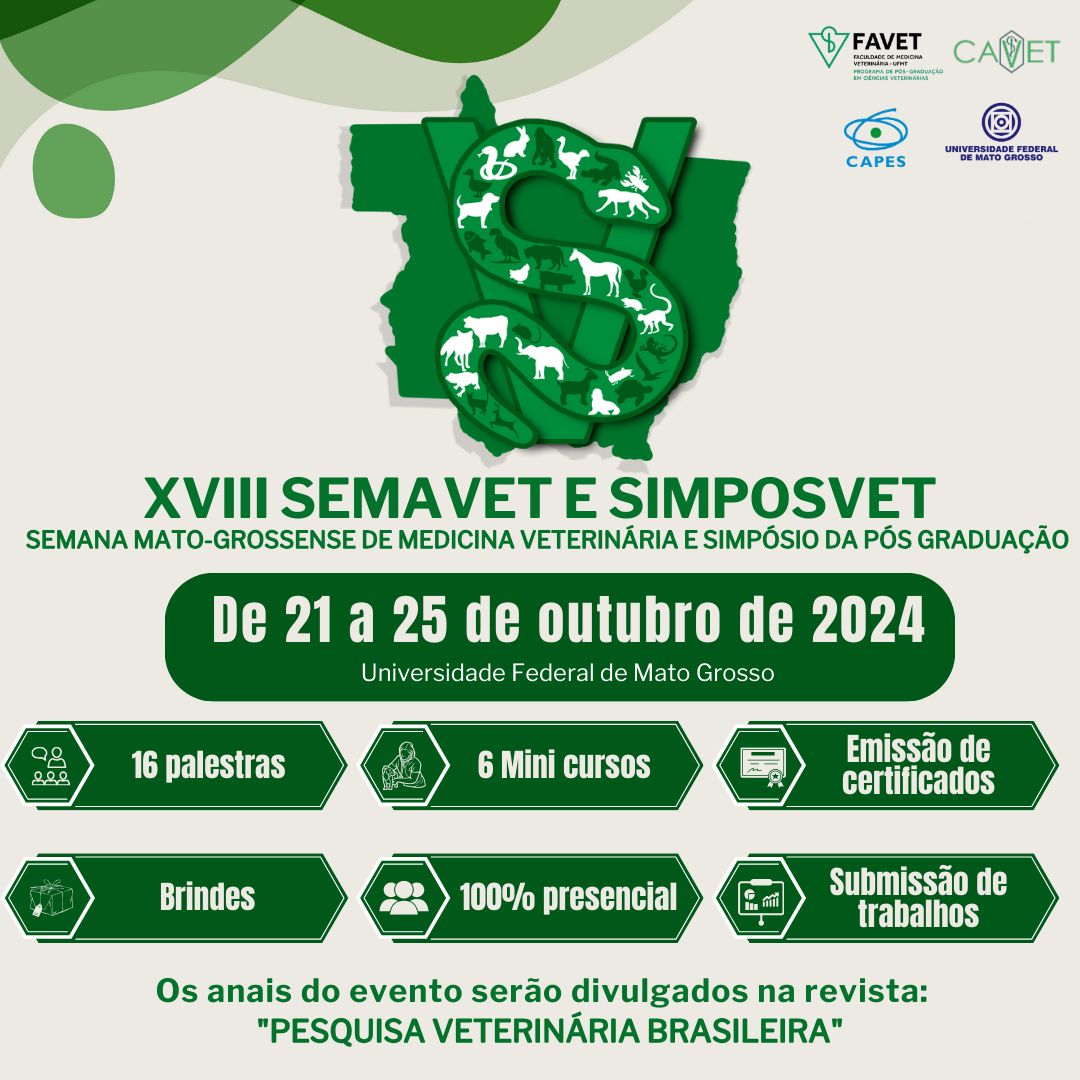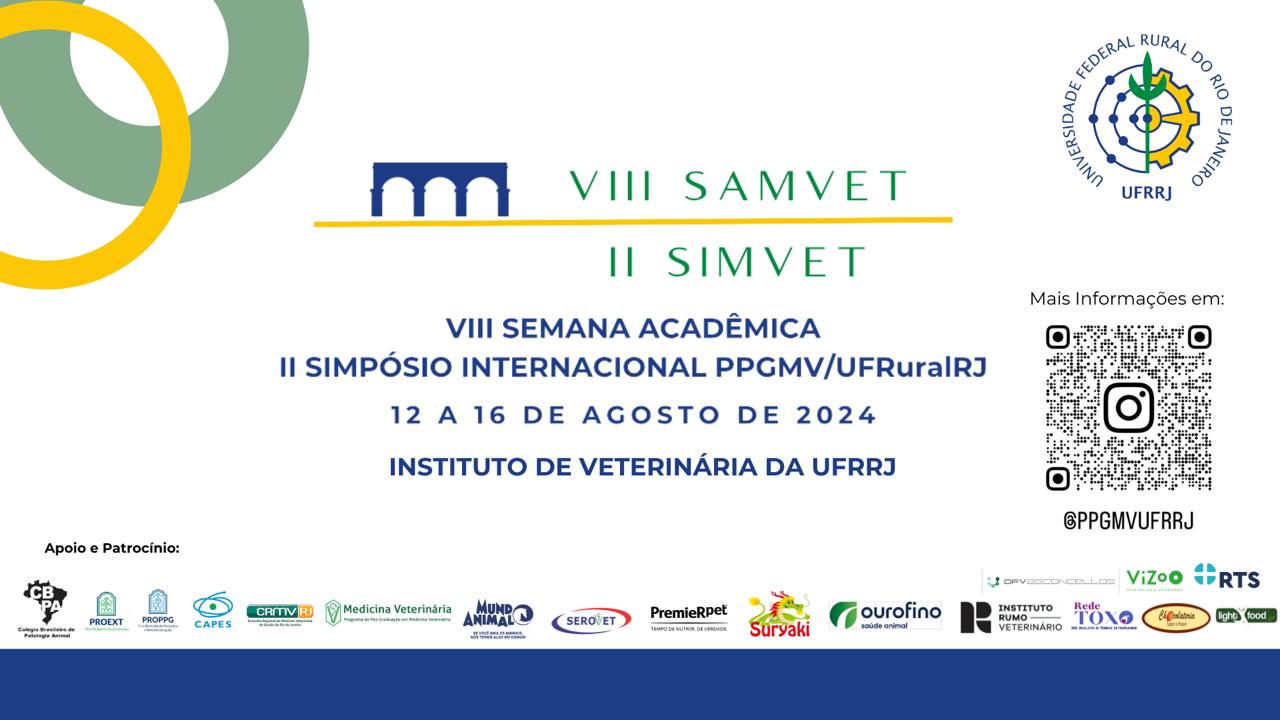Resultado da pesquisa (2)
Termo utilizado na pesquisa Pellizzon C.H.
#1 - Autologous and homologous skin grafts treated with platelet-rich plasma (PRP): experimental study in rabbits, 38(9):1818-1823
Abstract in English:
ABSTRACT.- Kemper B., Brandão C.V.S., Rossetto V.J.V., Gushiken L.F.S., Padovani C.R. & Pellizzon C.H. 2018. Autologous and homologous skin grafts treated with platelet-rich plasma (PRP8): experimental study in rabbits. [Enxertos cutâneos autólogos e homólogos tratados com plasma rico em plaquetas (PRP): estudo experimental em coelhos.] Pesquisa Veterinária Brasileira 38(9):1818-1823. Faculdade de Medicina Veterinária e Zootecnia, Rua Prof. Dr. Walter Mauricio Correa s/n, Cx. Postal 560, Distrito de Rubião Júnior, Botucatu, SP 18618-681, Brazil. E-mail: valeriasb@fmvz.unesp.br
The aim of the present study was to compare tissue repair of skin defects in rabbits submitted to autologous and homologous grafts treated or not with platelet-rich plasma (PRP). We selected nine rabbits and constituted four groups, designated as G1, in which were performed autologous graft treated with PRP; G2, autologous graft only; G3, homologous graft treated with PRP; and G4, homologous graft only. Macroscopic and histomorphometric evaluation was realized. The histomorphometric evaluation was performed by Hematoxylin/Eosin and Masson´s Trichrome staining with quantification of collagen fibers, macrophages, fibroblasts and vessels. The autologous graft treated with PRP showed positive influence on the early stage of the tissue repair process at the macroscopic evaluation, characterized by rosy color and cosmetic appearance. At the histomorphometric evaluation, there was no statistical difference in the number of macrophages and fibroblasts between the treated grafts or not with the PRP, as well as the quantification of vessels and collagen fibers. It can be concluded that PRP promotes a positive influence on the initial phase or “take” of the graft.
Abstract in Portuguese:
RESUMO.- Kemper B., Brandão C.V.S., Rossetto V.J.V., Gushiken L.F.S., Padovani C.R. & Pellizzon C.H. 2018. Autologous and homologous skin grafts treated with platelet-rich plasma (PRP8): experimental study in rabbits. [Enxertos cutâneos autólogos e homólogos tratados com plasma rico em plaquetas (PRP): estudo experimental em coelhos.] Pesquisa Veterinária Brasileira 38(9):1818-1823. Faculdade de Medicina Veterinária e Zootecnia, Rua Prof. Dr. Walter Mauricio Correa s/n, Cx. Postal 560, Distrito de Rubião Júnior, Botucatu, SP 18618-681, Brazil. E-mail: valeriasb@fmvz.unesp.br
Objetiva-se com o presente estudo comparar a reparação tecidual de defeitos cutâneos em coelhos, submetidos a enxertos autólogos e homólogos, tratados ou não com plasma rico em plaquetas (PRP). Para isso, foram selecionados nove coelhos e constituídos quatro grupos experimentais, designados como G1, no qual foi realizado enxerto autólogo tratado com PRP; G2, enxerto autólogo; G3, enxerto homólogo tratado com PRP; e G4, enxerto homólogo. Foram realizadas avaliações macroscópica e histomorfométrica, por meio das colorações de Hematoxilina/Eosina e Tricômio de Masson, incluindo quantificação de fibras colágenas, contagem de macrófagos, fibroblastos e vasos. O uso do enxerto autólogo com PRP influenciou positivamente na fase inicial do processo de reparação tecidual à avaliação macroscópica, caracterizada por coloração rósea e de aspecto cosmético. À avaliação histomorfométrica, não houve diferença estatística quanto ao número de macrófagos e fibroblastos entre os enxertos tratados ou não com o PRP, bem como quanto às contagens de vasos e a quantificação das fibras colágenas. Conclui-se que o PRP sob a promoveu influência positiva na fase inicial ou de “pega” do enxerto autólogo.
#2 - Análises histológica e morfométrica do uso de membrana biossintética de celulose em trocleoplastia experimental de cães, p.195-200
Abstract in English:
ABSTRACT.- Iamaguti L.S., Brandão C.V.S., Pellizzon C.H., Ranzani J.J.T. & Minto B.W. 2008. [Histological and morphometric analysis for the use of a biosynthetic cellulose membrane in experimental trochleopasty.] Análises histológica e morfométrica do uso de membrana biossintética de celulose em trocleoplastia experimental de cães. Pesquisa Veterinária Brasileira 28(4):195-200. Departamento de Cirurgia e Anestesiologia, Faculdade de Medicina Veterinária e Zootecnia, Universidade Estadual Paulista, Campus de Botucatu, Distrito de Rubião Jr s/n, Botucatu, SP 18.618-000, Brazil. E-mail: iamaguti_lu@hotmail.com
The aim of this study was to evaluate the use of a locally made biosynthetic cellulose membrane after experimental trochleoplasty, in order to verify whether its use could support migration of chondrogenic cells. Twelve male and female adult healthy dogs and without claudication were used. All dogs were submitted to trochleoplasty in both pelvic limbs after sedation and epidural anesthesia. In the left hind limb, the biosynthetic cellulose membrane was fixed with simple suture using Polyglactin 910 6-0 after performing trochleoplasty (treated group); whereas in the right limb (control group) only trochleoplasty was performed. The dogs were subdivided into 4 subgroups for postoperative evaluation at 15, 30, 60 and 90 days post-surgery. Biopsy was performed after exploratory arthrotomy for histopathologic and morfometric evaluation. At 30 and 60 days post-surgery, more condrocyte-like cells of immature aspect were observed in lesions treated with the cellulose membrane. At 90 days post-surgery the reparative tissue was characterized as mature fibrocartilage-like tissue without difference between the groups. In the control group there was a progressive increase of the number of cells until the end of the evaluation period. Otherwise, when compared to the initial period (15 days), there was an increase in the number of cells until 60 days, followed by a return the initial values at 90 days in the treated group. In comparison to controls, the number of cells was greater in the treated group from 15 to 60 days. Initially, the neoformed repair tissue was thicker in the treated group. From the results of this study, it was concluded that the cellulose membrane shortened the initial tissue repair process in the trochleoplasty area, showing good integration of the neoformed tissue with the adjacent cartilage.
Abstract in Portuguese:
ABSTRACT.- Iamaguti L.S., Brandão C.V.S., Pellizzon C.H., Ranzani J.J.T. & Minto B.W. 2008. [Histological and morphometric analysis for the use of a biosynthetic cellulose membrane in experimental trochleopasty.] Análises histológica e morfométrica do uso de membrana biossintética de celulose em trocleoplastia experimental de cães. Pesquisa Veterinária Brasileira 28(4):195-200. Departamento de Cirurgia e Anestesiologia, Faculdade de Medicina Veterinária e Zootecnia, Universidade Estadual Paulista, Campus de Botucatu, Distrito de Rubião Jr s/n, Botucatu, SP 18.618-000, Brazil. E-mail: iamaguti_lu@hotmail.com
The aim of this study was to evaluate the use of a locally made biosynthetic cellulose membrane after experimental trochleoplasty, in order to verify whether its use could support migration of chondrogenic cells. Twelve male and female adult healthy dogs and without claudication were used. All dogs were submitted to trochleoplasty in both pelvic limbs after sedation and epidural anesthesia. In the left hind limb, the biosynthetic cellulose membrane was fixed with simple suture using Polyglactin 910 6-0 after performing trochleoplasty (treated group); whereas in the right limb (control group) only trochleoplasty was performed. The dogs were subdivided into 4 subgroups for postoperative evaluation at 15, 30, 60 and 90 days post-surgery. Biopsy was performed after exploratory arthrotomy for histopathologic and morfometric evaluation. At 30 and 60 days post-surgery, more condrocyte-like cells of immature aspect were observed in lesions treated with the cellulose membrane. At 90 days post-surgery the reparative tissue was characterized as mature fibrocartilage-like tissue without difference between the groups. In the control group there was a progressive increase of the number of cells until the end of the evaluation period. Otherwise, when compared to the initial period (15 days), there was an increase in the number of cells until 60 days, followed by a return the initial values at 90 days in the treated group. In comparison to controls, the number of cells was greater in the treated group from 15 to 60 days. Initially, the neoformed repair tissue was thicker in the treated group. From the results of this study, it was concluded that the cellulose membrane shortened the initial tissue repair process in the trochleoplasty area, showing good integration of the neoformed tissue with the adjacent cartilage.












